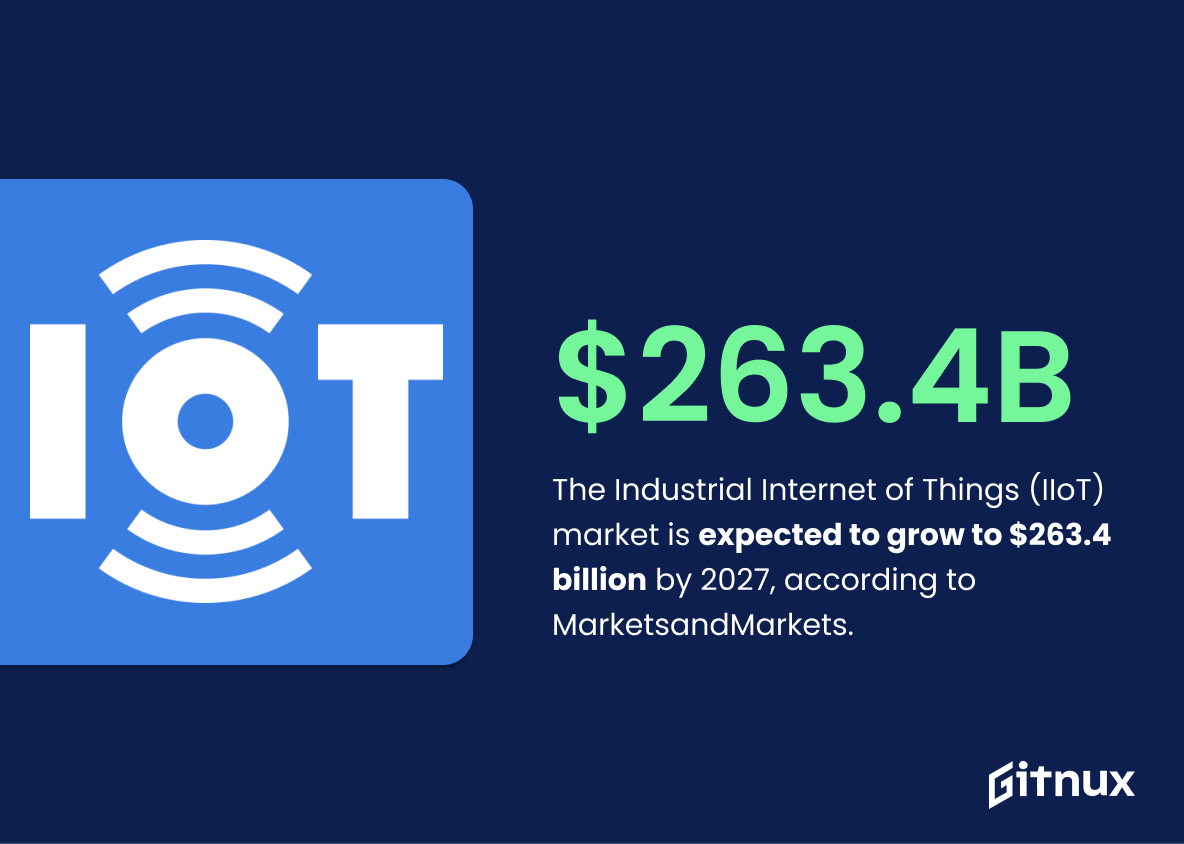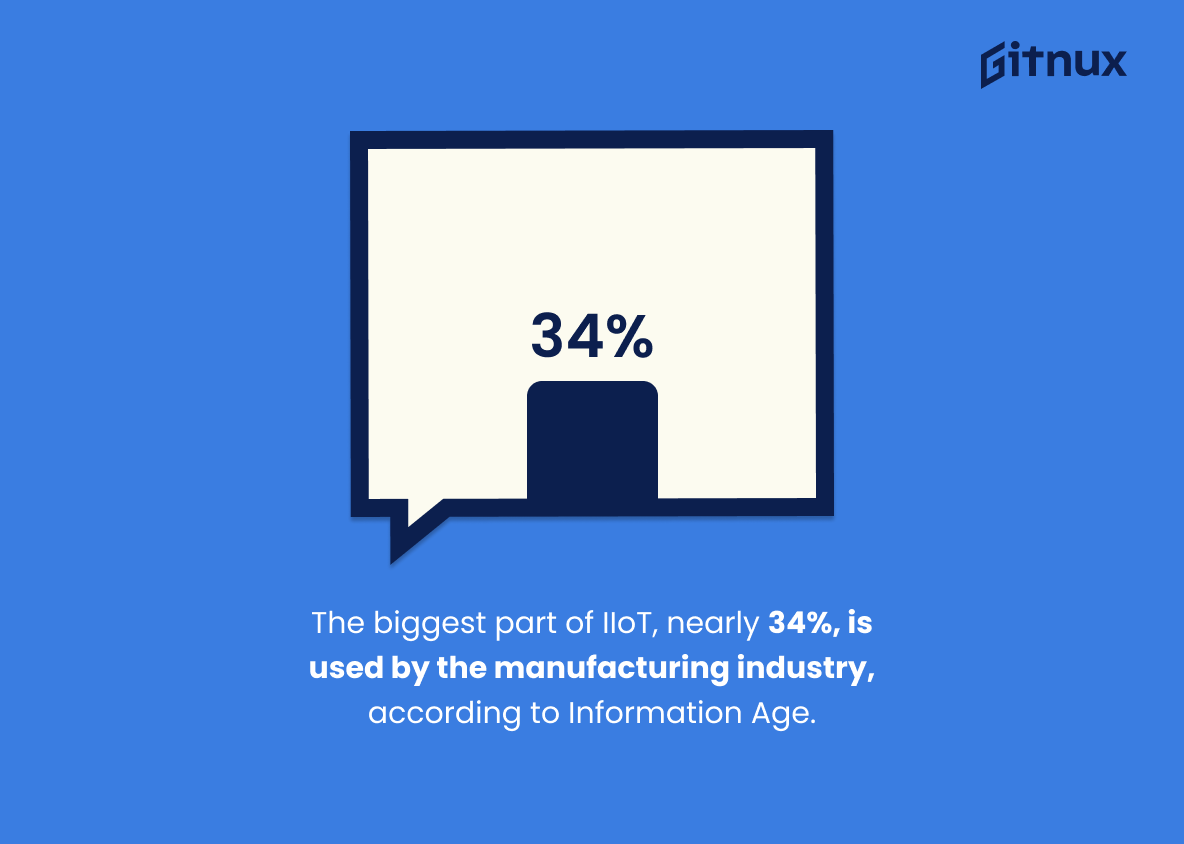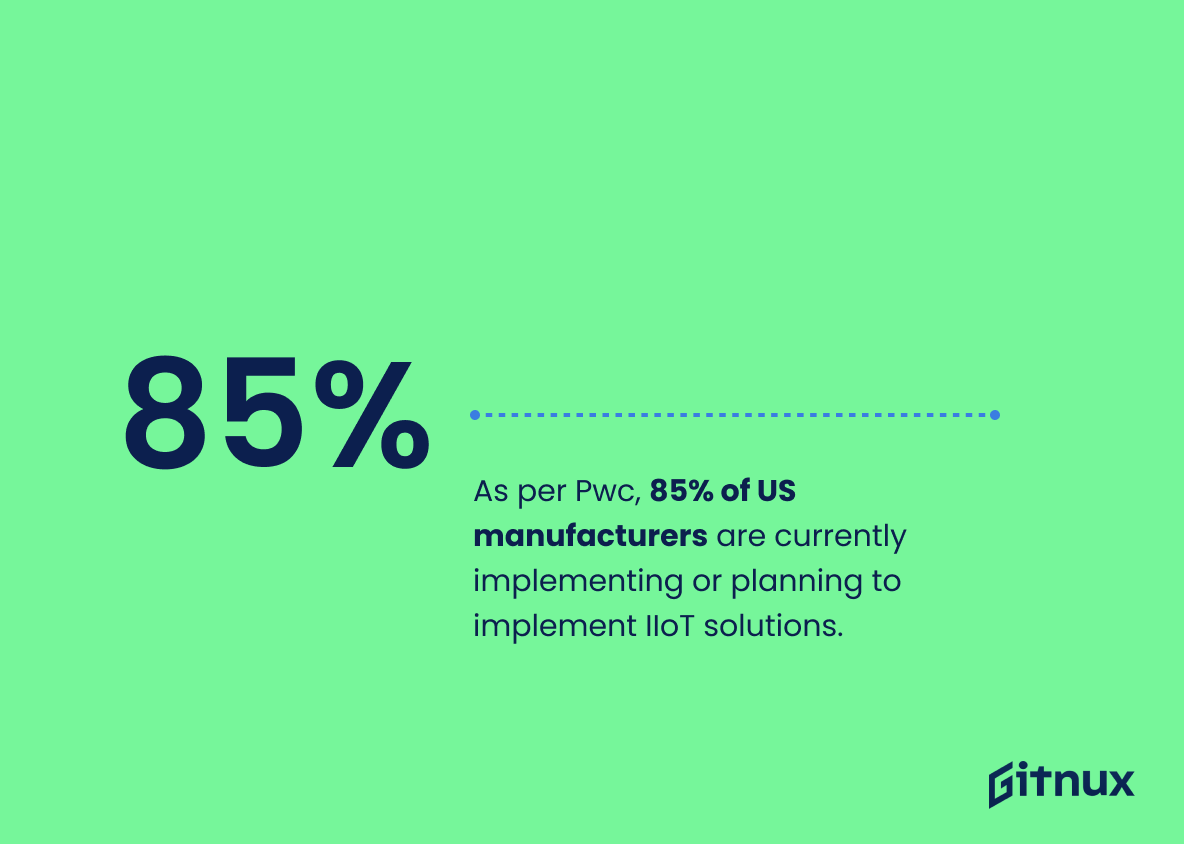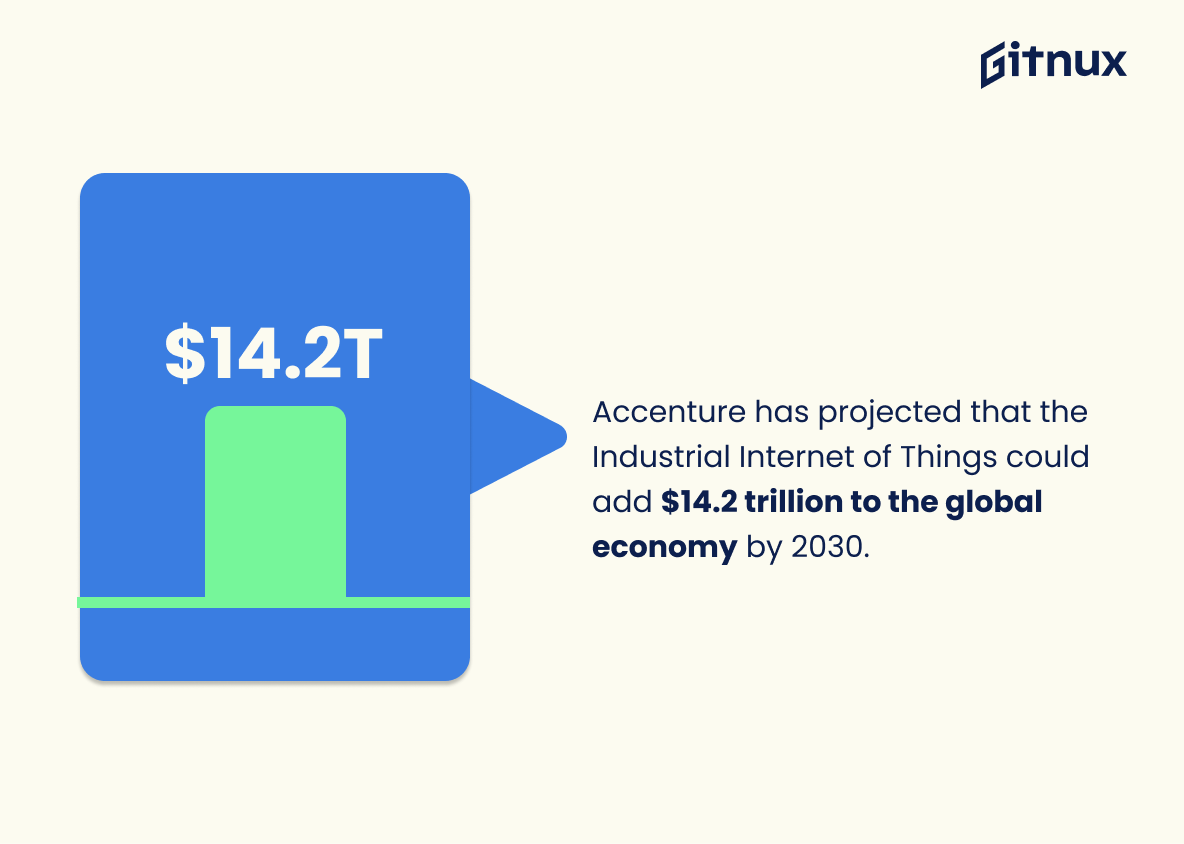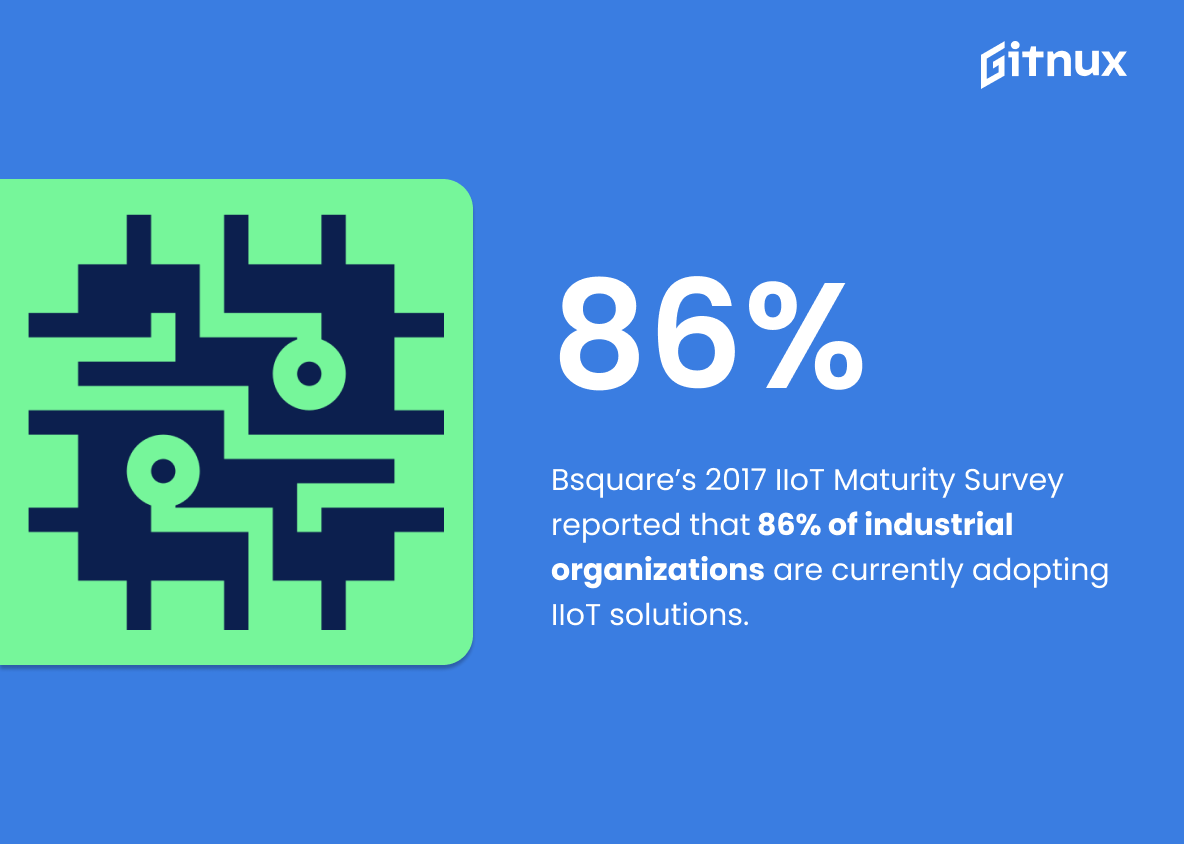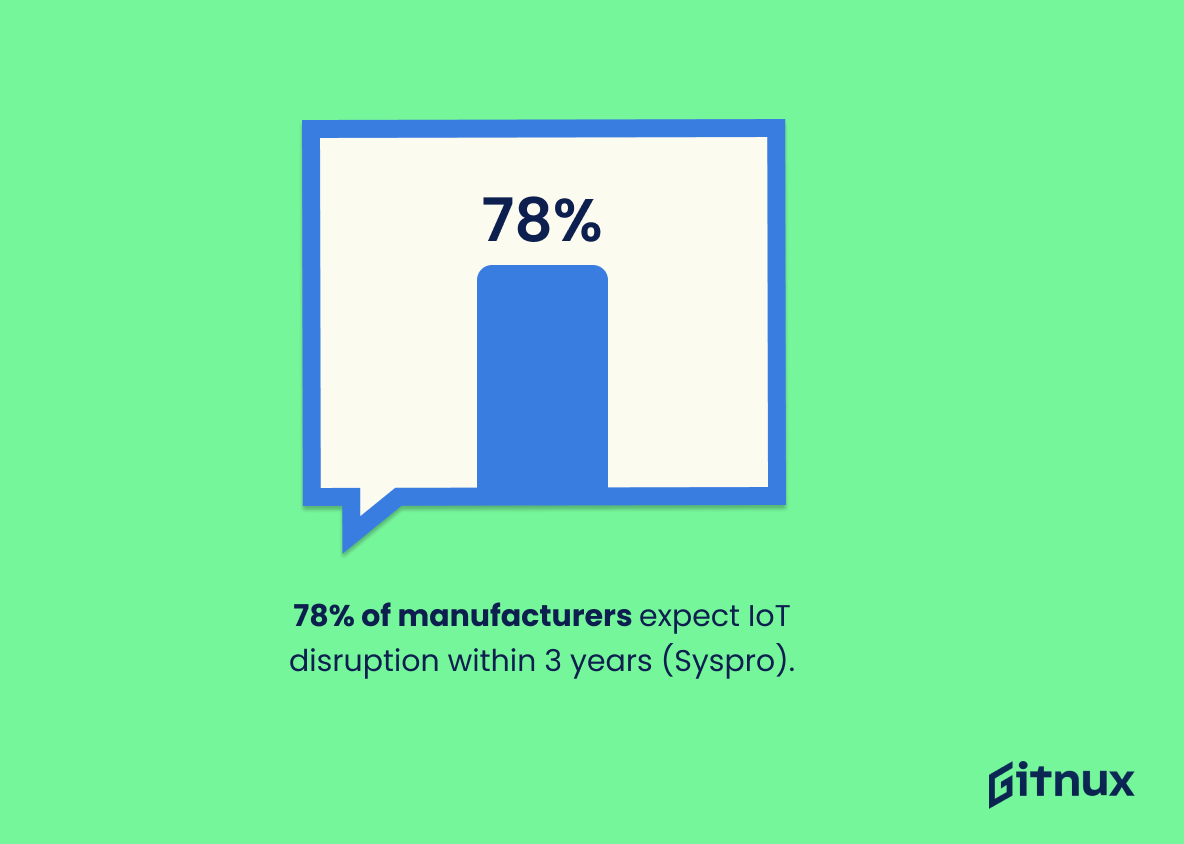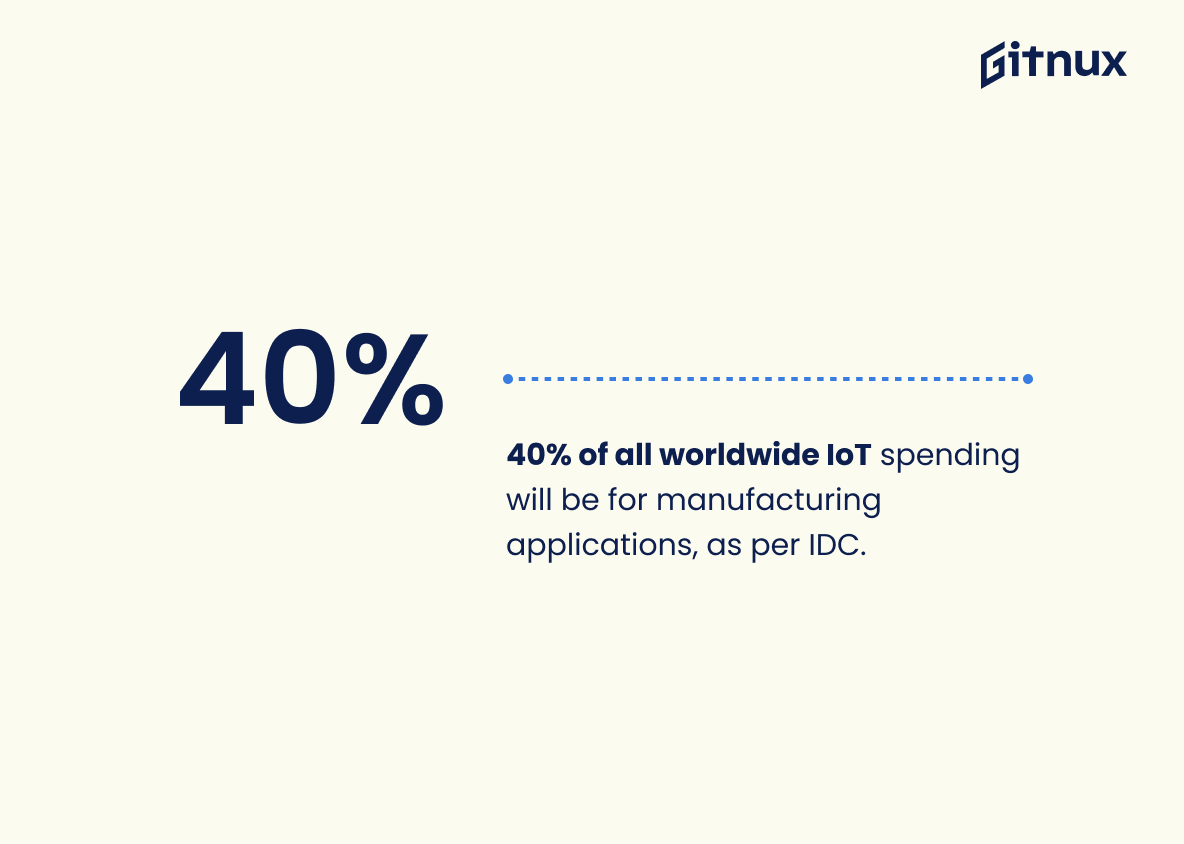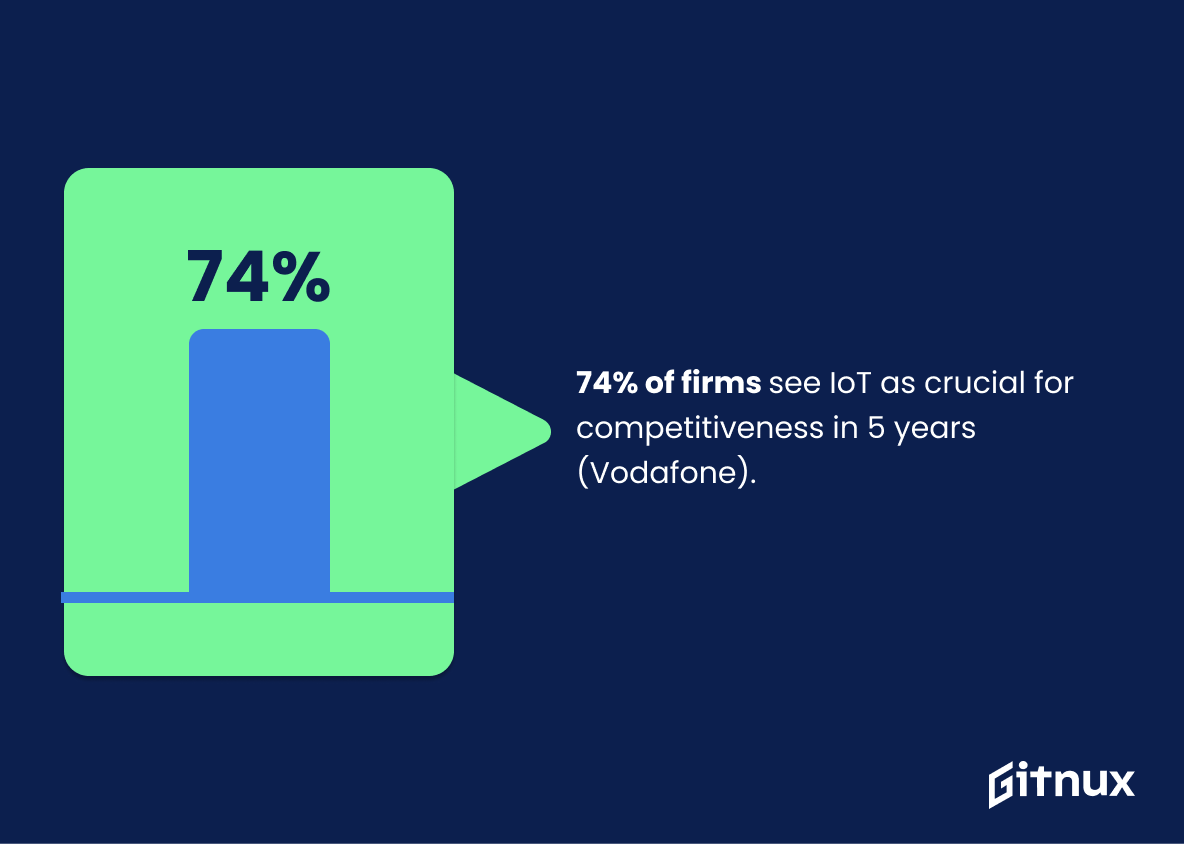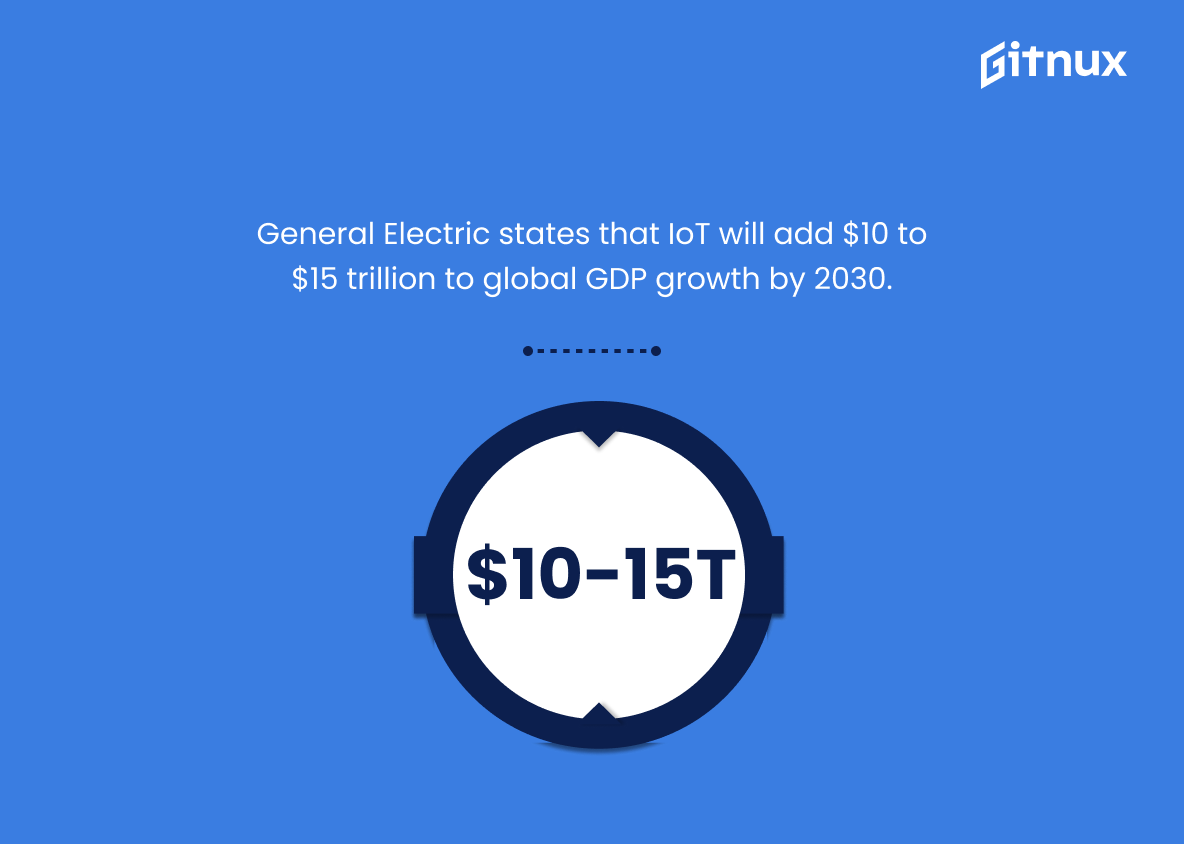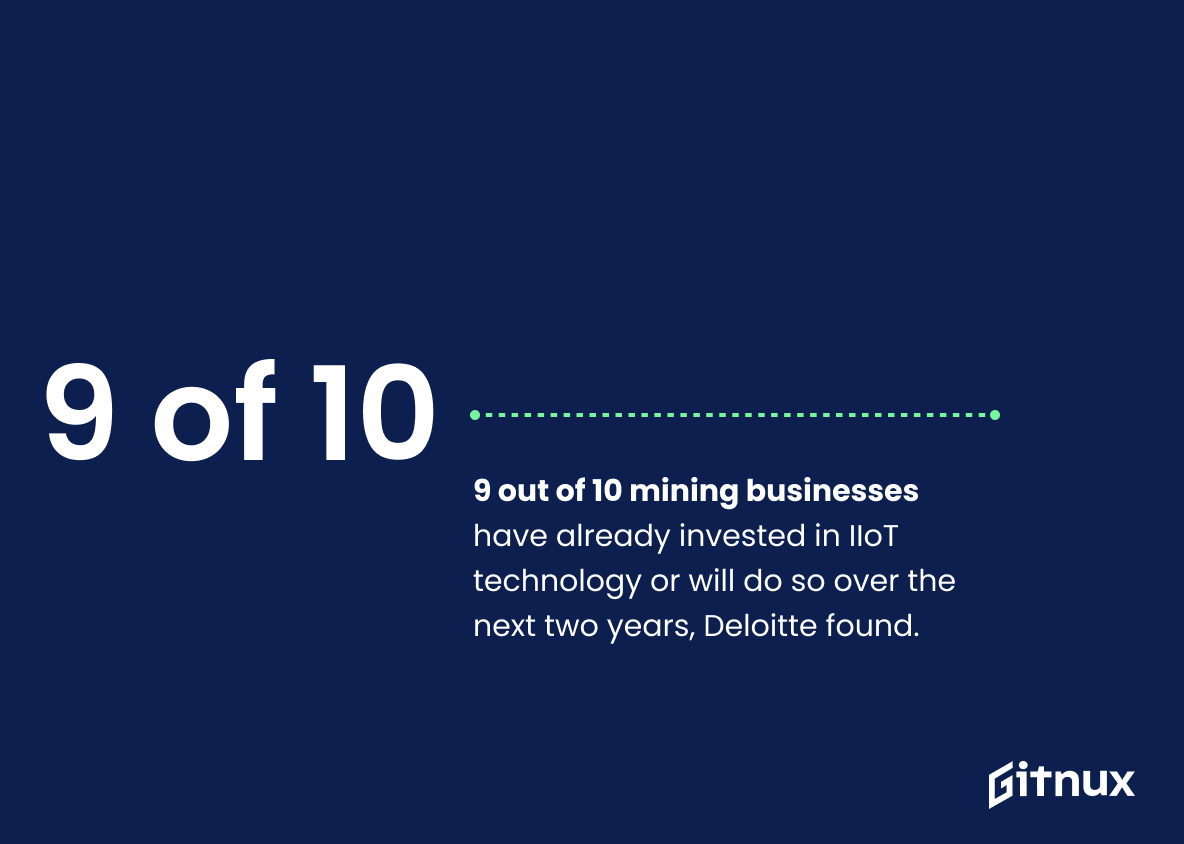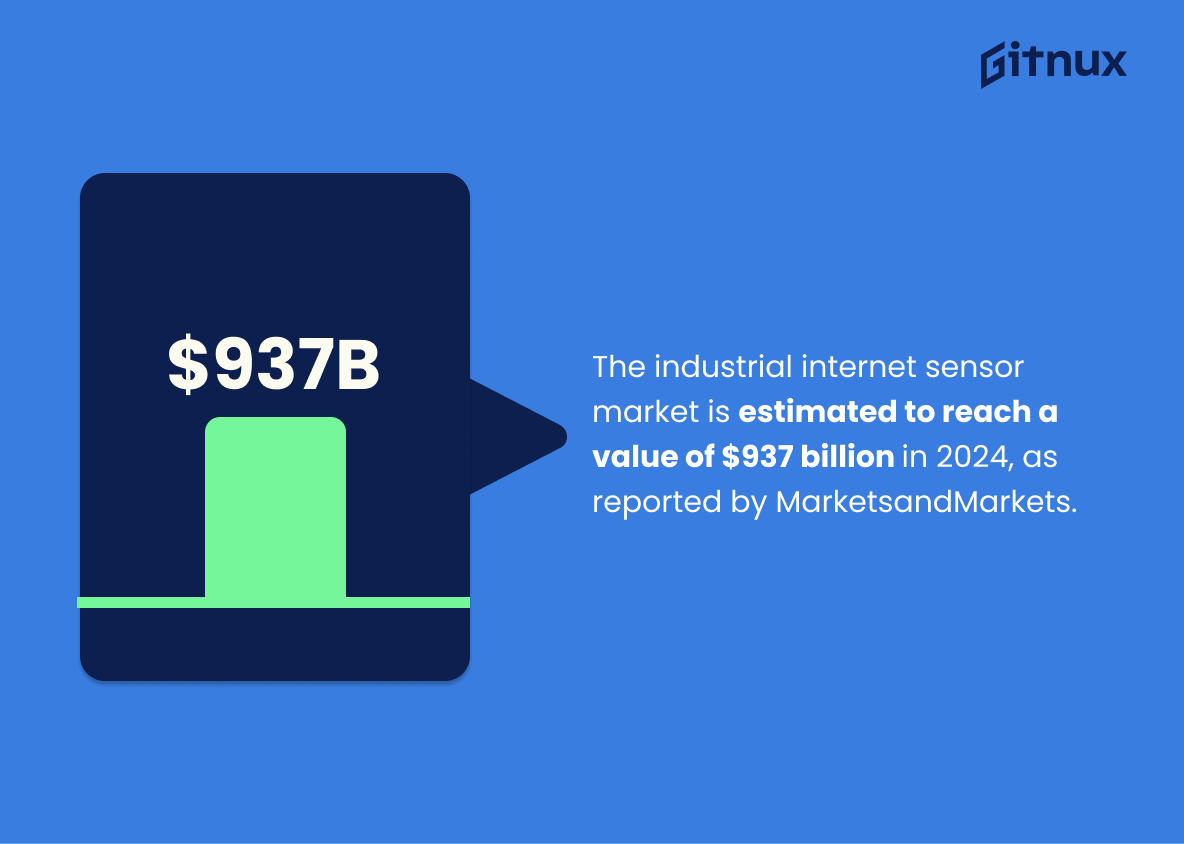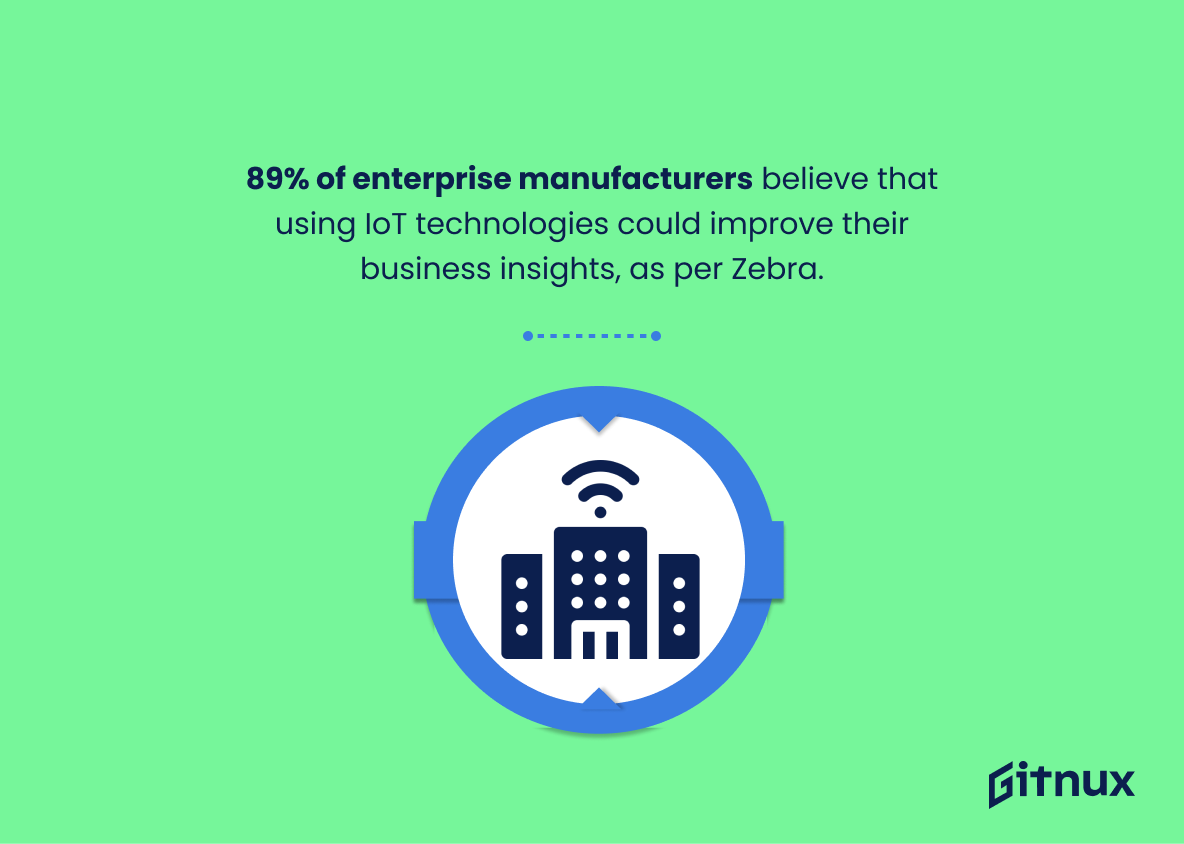As the digital world continues to evolve, the Industrial Internet of Things (IIoT) is revolutionizing various industries, driving efficiency, and making processes smarter. This transformation has given rise to new business opportunities and challenges, creating a seismic shift in the industrial landscape. Gain a competitive edge by deciphering the complexities and depths of the IIoT with our comprehensive exploration into the latest IIoT industry statistics. Let’s delve deep into the groundbreaking trends, substantial growth projections, and the potential impacts this industry could have on your business, preparing you for the future in this digitized industrial era.
The Latest Iiot Industry Statistics Unveiled
The Industrial Internet of Things (IIoT) market is expected to grow to $263.4 billion by 2027, according to MarketsandMarkets.
Painting an unwavering testimony to the surge of IIoT, this prediction of a colossal ascent to $263.4 billion by 2027 spun by MarketsandMarkets, portrays the exponential curve the IIoT industry is deemed to follow. This potent projection serves as a keystone for the wider discussion surrounding IIoT. It powerfully magnifies, not only the escalating demand and adoption of IIoT solutions across varied industries, but also encapsulates the vast growth potential intrinsic to this technological revolution. This forecast unfolds a narrative of unrelenting expansion and innovation, fueling our anticipation for the transformative impact of IIoT on industrial operations.
The biggest part of IIoT, nearly 34%, is used by the manufacturing industry, according to Information Age.
Illustrating the dominion of the manufacturing industry in the realm of Industrial Internet of Things (IIoT) – wielding nearly 34% usage, according to Information Age – is pivotal. It underscores the centrality of IIoT for the progress and evolution of manufacturing processes. Moreover, it highlights the latent potential and exciting opportunities for other sectors to deepen their IIoT implementations. In the blog about IIoT Industry Statistics, this fact serves as a significant trailblazer, inviting readers to explore the reasons behind manufacturing’s commanding lead and speculate about how this game-changing technology can revolutionize other fields as well.
As per Pwc, 85% of US manufacturers are currently implementing or planning to implement IIoT solutions.
Highlighting the PwC statistic, we navigate the astonishing surge in US manufacturers’ interest towards IIoT solutions. Eighty-five percent illustrates an industry trend that’s hard to dismiss, underscoring a clear trajectory towards incorporating this advanced technology. In the area of IIoT industry statistics, this striking figure seizes attention, underscoring the accelerated pace of technological adoption. It’s more than just a number – it’s a testament to how manufacturers are acknowledging the transformative potential of IIoT solutions, and are willing to invest in this brave new world of automation, data exchange, and interconnected equipment. Hence, it sets the stage for an in-depth exploration of related industry trends and prospects while leaving a profound impact on readers’ perception of IIoT’s growth and acceptance.
Accenture has projected that the Industrial Internet of Things could add $14.2 trillion to the global economy by 2030.
The prophetic projection by Accenture, anticipating the Industrial Internet of Things (IIoT) to potentially inject a staggering $14.2 trillion into the global apparatus by 2030, casts an exciting light onto the canvas of the IIoT Industry. This evocative figure, not only highlights the sheer financial volume anticipated to course through the veins of the industry in the upcoming decade, it also brandishes the possibility of IIoT becoming a crucial pillar in supporting global economic development. In the context of a blog post about IIoT industry statistics, these numbers serve as a promising forecast, inviting readers to delve deeper into the unfolding narrative of the IIoT industry, and its potential to reshape the contemporary economic landscape.
According to McKinsey, IIoT will drive productivity to the point of generating $12.6 trillion to global GDP by 2030.
The very core of this statistic stretches out to illuminate the colossal economic contribution anticipated from the IIoT. Envision lifting the curtain of the global GDP forecast for the year 2030 to witness an impressive $12.6 trillion boost – as predicted by McKinsey. Through the lens of this extraordinary revelation, we can foresee a striking shift in economic power steered by IIoT proliferation across industries. This figure isn’t just a monetary value but a vivid reflection of the substantial productivity gains expected, unmatched market opportunities, and the untapped growth potential within the IIoT sector. The substantial implications of this piece of data provides an indisputable base to the canvas of a blog post, painting a comprehensive picture of the IIoT industry’s global influence and enabling readers to grasp the sheer scope of opportunities in store. Suffice to say, in the world of IIoT industry statistics, this is one figure that echoes loudly, transitioning the narrative from mere numbers to a tale of technological revolution, escalating productivity and a shift in the global economic landscape.
Bsquare’s 2017 IIoT Maturity Survey reported that 86% of industrial organizations are currently adopting IIoT solutions.
Highlighting the statistic that Bsquare’s 2017 IIoT Maturity Survey reported a significant 86% of industrial organizations adopting IIoT solutions sets the stage for an intriguing narrative on the galloping pace of technological advancement. This high percentage illustrates a strong trend in the industrial sector leaning towards the Internet-of-Things (IoT) solutions. It is a resounding affirmation of increasing dependency on IIoT in industry mechanics, providing a roadmap for future investments and advancements. In the overarching context of IIoT industry statistics, this datum becomes a pivotal plot point that underlines the rapid acceptance and permeation of IIoT solutions in the fabric of the industrial ecosystem.
According to Syspro, 78% of manufacturers believe that IoT will disrupt the industrial sector in the next three years.
Positioning this statistic at the forefront of a blog post about IIoT industry statistics unfolds a compelling narrative about the profound impact that the Internet of Things is predicted to have on the industrial sector. The figure of 78% signifies a dominant sentiment among manufacturers – a powerful majority foreseeing substantial disruption brought on by IoT within the coming three years. Notably, this isn’t the voice of uninvolved observers, but of industry insiders with a sound comprehension of manufacturing dynamics. Therefore, this statistic drives home the point that manufacturers are acknowledging the inevitability of technology-driven change and the need to adapt to remain competitive. It brings forth the urgency in understanding, adopting, and integrating IoT in the industrial sector for businesses aiming to stay ahead of the curve.
40% of all worldwide IoT spending will be for manufacturing applications, as per IDC.
Highlighting that 40% of all global IoT expenditure will be funneled into manufacturing applications, as reported by IDC, paints a vivid picture of the growing fusion of the Industrial Internet of Things (IIoT) and manufacturing sectors. It captures the undeniable trend of digital transformation in industries, epitomizing the immense trust that manufacturers place in IIoT solutions to enhance their operations, efficiency, and overall productivity. For readers perusing an IIoT industry statistics blog post, this statistic could serve as an eye-opener to the unprecedented opportunities and vast potential waiting to be untapped in the intersection of these two domains.
According to Vodafone, 74% of companies believe that if they do not incorporate IoT in the next five years, they will risk falling behind competitively.
Highlighting Vodafone’s insight that 74% of companies foresee potential competitive drawbacks if they fail to integrate IoT within the next five years, reinforces the evolving landscape of the industrial sector. This paints a compelling picture of the perceived necessity of IoT adoption, underpinning the urgency and strategic significance for companies to keep pace with technological advances. Moreover, it underscores the prevailing sentiment among businesses, signaling the transition from traditional methods towards a more digitized, efficient, and transformative approach in the form of IoT. Therefore, readers delving through a blog post about IIot industry statistics will find this insight immensely valuable, as it not only substantiates the current trends but also forecasts the potential shifts in the global industry.
General Electric states that IoT will add $10 to $15 trillion to global GDP growth by 2030.
Envisioning a future propelled by the Industrial Internet of Things (IIoT), the weighty prediction by General Electric, a giant in the field, underpins the colossal economic impact this technology is slated to generate. The forecast of IoT adding a mind-boggling $10 to $15 trillion to global GDP growth by 2030 can jettison the IIoT discussion beyond its current horizons. Positioned within an IIoT industry statistics blog post, this figure illuminates the macro-level economic influence of IIoT. The projection not only underscores the ever-growing significance and penetration of IIoT solutions but also serves as a powerful testament to the enormous financial potential this digital revolution may unlock. As such, it’s a chilling reminder of the forthcoming sea change in the global economic landscape, painted vividly with the brush of IIoT innovation.
According to a report by Bain, the combined markets of IoT will grow $520 Billion in 2021, more than double the $235 Billion spent in 2017.
Exploring the exponential growth depicted in Bain’s report reveals a significant trend within the IIoT (Industrial Internet of Things) industry. An ascending surge from $235 Billion in 2017 to a projected $520 Billion in 2021, this statistic positions the IIoT not just as a mere consideration, but as a profound influencer in the marketplace. It underscores the rapid digitization and interconnectivity being embraced by industries worldwide, and emphasizes the strong forward momentum that the IIoT market seems set to maintain in the coming years. In a nutshell, the IIoT industry is not just surviving, but thriving – painting an optimistic picture of future growth and sustainability. This hints at a future where the IIoT will be a pivotal part of our business and personal lives, making it crucial for organizations and individuals to understand and adapt to this emerging force.
Statista report shows that IIoT unit sales on the global market are expected to rise dramatically, from 5.4 billion units in 2016 to 21.5 billion in 2025.
Envision the scale of IIoT’s rousing symphony, with each unit sold adding a note to the crescendo. Stepping from a mere 5.4 billion units in 2016 to an impressive projection of 21.5 billion units by 2025, according to Statista, it unfolds a tale of substantial growth and expanding horizons within the IIoT industry. Like a narrative woven into the fabric of the blog post, this statistic substantiates the rise in IIoT’s popularity, underlining its increasingly pivotal role in the modern world. This figure, a numerical representation of IIoT’s brightening prospects, serves as a guideline navigating the industry trends, fostering better understanding, and encouraging informed decision-making among keen entrepreneurs, investors, and tech-enthusiasts partaking in the unraveling saga of IIoT.
9 out of 10 mining businesses have already invested in IIoT technology or will do so over the next two years, Deloitte found.
Highlighting such impactful data can truly illuminate the rapid adoption trajectory of IIoT technology within the mining industry. Deloitte’s revelation of 90% of mining businesses either already benefiting from, or planning to invest in, IIoT technology within a two-year span indicates a seismic shift in industry practices. This compelling figure underscores not only the perceived potential of this technology, but also its imminent positioning as a new industry standard. Consequently, readers should pay close attention and stay informed about wider industry trends and the potential benefits and challenges that IIoT technology might introduce to this sector.
The industrial internet sensor market is estimated to reach a value of $937 billion in 2024, as reported by MarketsandMarkets.
In the bustling universe of the IIoT (Industrial Internet of Things) industry, nestled at its heart is the industrial internet sensor market – the untold catalyst driving this digital revolution. A beacon shining light on the potential of the IIoT landscape, it is projected to hit a staggering $937 billion by 2024, as gleaned from MarketsandMarkets. This not only underscores the escalating demand for these transformative sensors but also ties into the IIoT’s forecasted exponential growth, painting a vivid picture of a future where industry marries innovation to unlock unprecedented levels of productivity and efficiency. Hence, this statistic acts as the heartthrob in our comprehension of the IIoT industry’s ever-expanding boundaries and limitless potential.
89% of enterprise manufacturers believe that using IoT technologies could improve their business insights, as per Zebra.
Harnessing the power of this enlightening statistic, it is intriguing to imagine the potential transformation of the enterprise manufacturing landscape. The statistic points toward a future where businesses draw upon Internet of Things (IoT) technologies as a cornerstone strategy to distil clarity from their operational muddle. The fact that a staggering 89% of manufacturers are vouching for IoT’s potential to refine business intelligence is a compelling testament to the sheer promise this technology holds. This revelation, thus, acts as a beacon, illuminating the trajectory of the IIoT industry. It implicates a world where the use of IoT in performance monitoring, supply chain optimization, quality control and more brings forth an era of unparalleled efficiency and insight for the industry.
About 75% of businesses are waiting up to two years to see ROI from their IoT initiatives, as stated by Genpact.
In illuminating the landscape of the IIoT industry, this unambiguous statistic serves as a beacon of revelation. It beautifully encapsulates the length of gestation period that an overwhelming 75% of businesses endure, patiently waiting for up to two years, to reap the return on their IoT investment. As presented by Genpact, this statistic enlightens us on the rather long-term vision companies have to adopt when diving into IoT initiatives. It instills an understanding of the real-world patience and persistence required in this industry while subtly emphasizing the importance of long-term survival strategies in this swiftly evolving digital era. Moreover, it nudges companies to be financially prepared for this waiting period, ensuring they are not blindsided by the delay in return realization. Undoubtedly, this statistic carries significant weight, reinforcing that investment in IoT is not just about capital but equally about time and endurance.
IoT Analytics suggested that by the end of 2021, there will be more than 37 billion connected IoT devices.
Highlighting IoT Analytics’ projection for more than 37 billion connected IoT devices by the end of 2021 provides a substantive perspective on the swift expansion and potential reach of the IIoT industry. This striking figure punctuates the argument of a rapidly growing market, signalling a revolutionary shift in how businesses operate, communicate, and engage. Through this number, we grasp the sheer magnitude of networks and platforms that will be available for innovation and development, reinforcing the argument about the significance and transformative power of IIoT in industries worldwide. This also hints at the vast investment opportunities and market potential for those looking to enter or expand in the industrial internet of things market.
According to Microsoft, 88% of companies believe IoT provides an advantage in the competitive landscape.
Unveiling an intriguing revelation in the terrain of Industrial Internet of Things (IIoT), Microsoft reports that a substantial 88% of companies sense a distinct edge brought about by IoT in the fiercely competitive landscape. The importance of this statistic should not be underestimated within the narrative of the IIoT industry, notably in a blog post dedicated to this very topic. It complements the discussion by providing compelling hard data, demonstrating the high degree of conviction held by companies worldwide regarding the tangible benefits and strategic advantages offered by IoT.
Moreover, it serves as a testament to IoT’s transformative potential and underscores the critical role that technological innovation plays in shaping industries. Amidst the sea of uncertainties, this figure emerges as an clear indicator towards one direction – betting on IoT, a path already chosen by a majority across the corporate fraternity. What’s unspoken, but equally significant, is the implication it bears on those remaining outside this percentage – bringing forth the urgency to adapt, or the risk of being left behind. Thus, this statistic transcends the role of being a mere data point, and instead breathes life into the evolving discourse on IIoT.
Frost & Sullivan report claims that by 2025, around 45% of data created by industrial devices will be processed, stored, and analyzed at the edge of the network where it is created, due to IIoT.
Highlighting the Frost & Sullivan report in a blog post about IIoT Industry Statistics serves as a dynamic revelation into an ongoing shift within the IIoT industry. The forecasted rate of 45% data processing at the network edge by 2025 is a clarion call that captures the burgeoning emphasis on edge computing. This impending change is expected to revolutionize how industrial devices interact with data, sparking a new era of increased efficiency and augmented local data control. Undeniably, this statistic is a powerful compass guiding us towards the future trajectory of the IIoT industry.
Conclusion
The Industrial Internet of Things (IIoT) has undeniably transformed industries across the globe. An assessment of IIoT statistics not only emphasizes the thriving growth of this technology but also highlights its remarkable potential in driving efficiency, productivity, and profitability. As IIoT continues to evolve, it’s poised to revolutionize how industries operate, making it vital for businesses to stay at the forefront of these advancements. By embracing and integrating IIoT, they can harness the power of data-driven insights, fostering smarter operations, and creating an edge in today’s increasingly competitive world.
References
0. – https://www.news.microsoft.com
1. – https://www.www.accenture.com
2. – https://www.www.genpact.com
3. – https://www.ww2.frost.com
4. – https://www.www.marketsandmarkets.com
5. – https://www.www.vodafone.com
6. – https://www.www.ge.com
7. – https://www.www.bain.com
8. – https://www.iot-analytics.com
9. – https://www.www.statista.com
10. – https://www.www.mckinsey.com
11. – https://www.www2.deloitte.com
12. – https://www.www.bsquare.com
13. – https://www.www.pwc.com
14. – https://www.www.idc.com
15. – https://www.www.information-age.com
16. – https://www.www.zebra.com
17. – https://www.us.syspro.com
